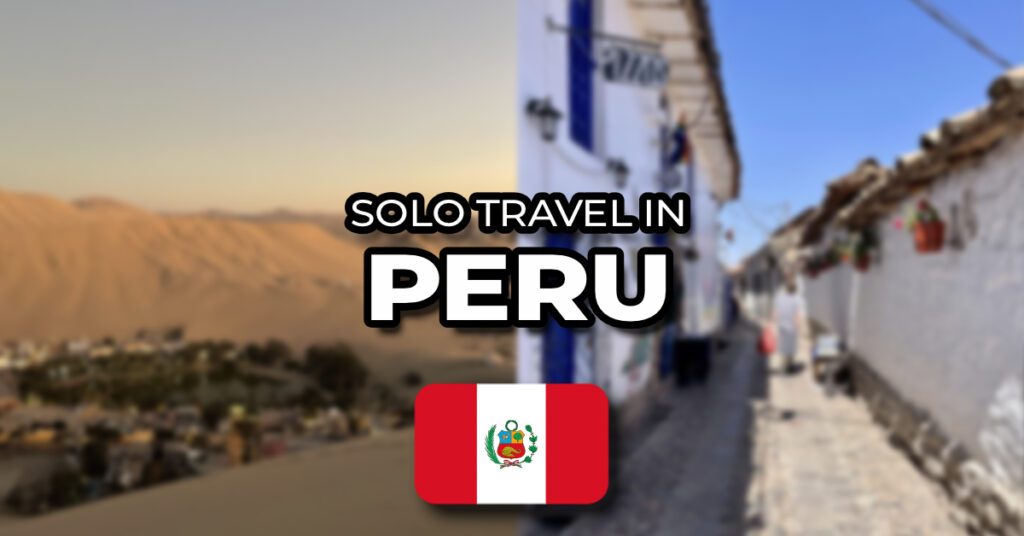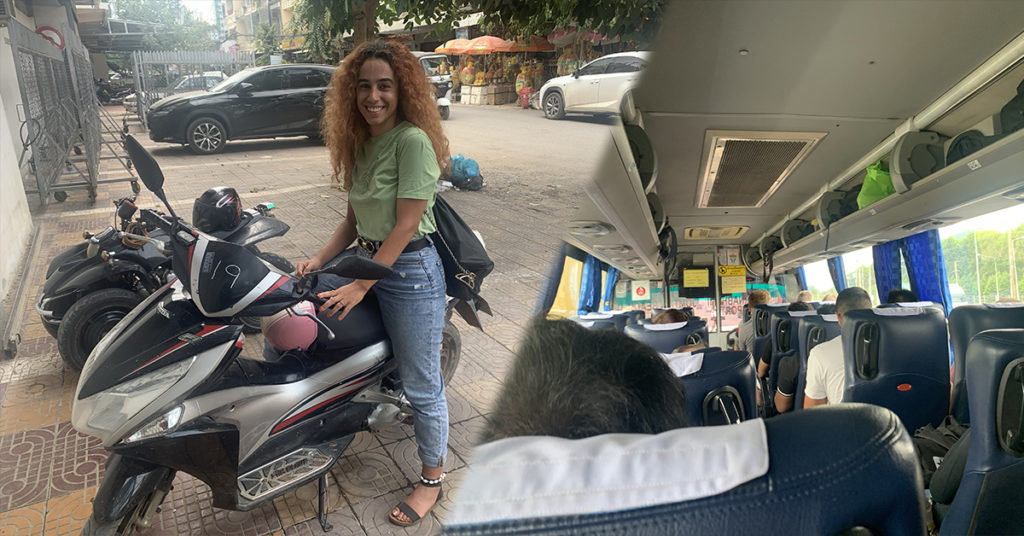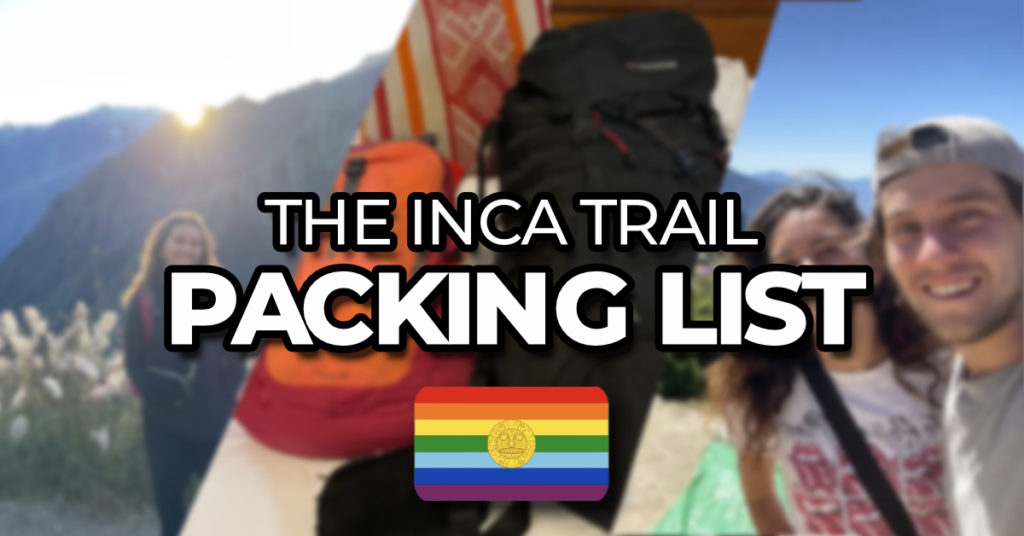As I scrolled endlessly through countless travel blogs and articles, each reproducing the same superficial tips and highlights about Peru, a deep frustration set in. It dawned on me that the true essence of this majestic country, with its rich culture and flavors, remained largely untouched. This oversight seemed almost criminal. And so, I felt compelled to craft this comprehensive guide, not just as a traveler but as someone who has woven part of their soul into the very fabric of Peru.
This isn’t your typical rundown of the ’10 Best Things to Do’. You might want to look elsewhere if that’s what you’re after. But if you’re yearning to plunge into the depths of Peru’s cities, an authentic taste of its diverse culinary landscape, and an intimate acquaintance with its warm-hearted people, you’ve found your haven. This guide invites you to carve out your unique path through Peru, armed with insights and tips that go beyond the standard tourist trail.
Solo Travel in Peru Quick Overview
Budget
- Accommodation: $10 – $120
- Food: $2 – $50
- Alcohol (pint): $1.50 – $5
- Transport: $0.50 – $50
- Workspace: $10 (daily) – $200 (monthly)
- Internet/Sim: $10 – $20
Visa Requirements
- Nomad Visa?: No
- Visa cost: Free for many nationalities
- Visa length: 90 days
- Extension: Up to an additional 90 days
- Extension cost: $20
Connectivity
- WiFi
- Upload: 5 Mbps to 20 Mbps
- Download: 10 Mbps to 50 Mbps
- Cost: $10 (daily) – $200 (monthly)
- SIM Plan (1 month, unlimited)
- Upload: 5 Mbps to 15 Mbps
- Download: 10 Mbps to 30 Mbps
- Cost: $15 – $30
Getting To & Around Peru
Getting to and around Peru offers multiple options:
- International flights for arrival
- Domestic flights
- Long-distance buses
- Rideshares
- Trains
- Car rental
Each mode of transportation caters to different budgets and preferences, ensuring travelers can easily navigate the country.
Peru is a large country, and many of the most popular cities are located pretty far away from one another. However, most of the main destinations have local airports, and the Peruvian roads are pretty well maintained (I drove the Panamerica from Lima to Ica and it was one of the best avenues I’ve ever seen in South America).
International Flights to Peru
Jorge Chávez International Airport in Lima is the primary gateway for international travelers flying into Peru. It serves numerous global airlines, providing direct and connecting flights from various continents. Most people fly into this airport when coming to Peru, catching domestic flights to other destinations afterward. Once in Lima, visitors can easily catch domestic flights to other parts of the country. Lima acts as a hub, making it convenient to explore distant regions like Cusco, Arequipa, or Iquitos.
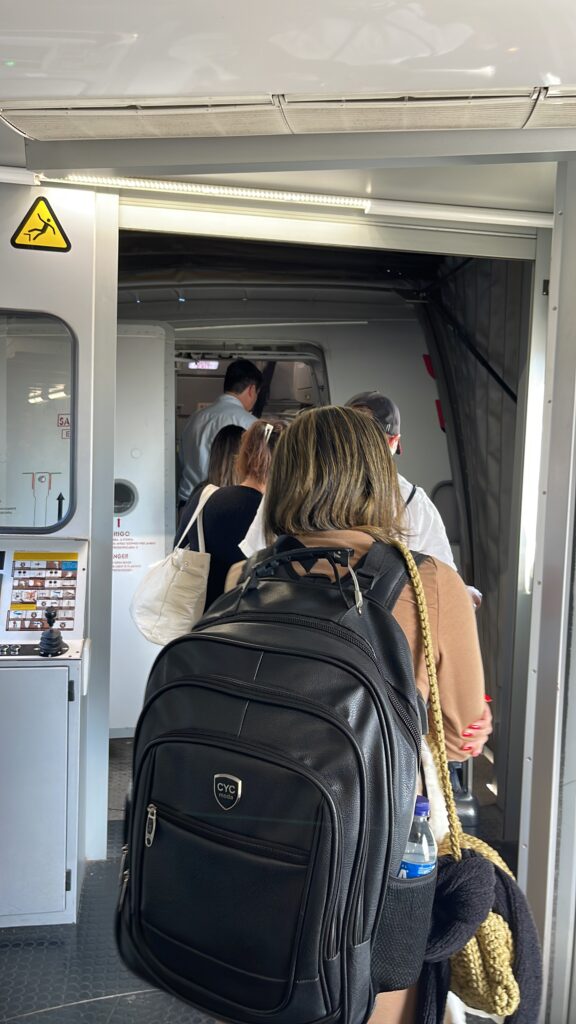
Domestic Flights
The key airlines for domestic flights in Peru are LATAM and Avianca, along with smaller local airlines like Star Peru and Peruvian Airlines, offering competitive prices. These airlines connect major cities and tourist destinations, making it a time-efficient way to travel long distances. It’s advisable to book in advance, especially during peak tourist seasons, to secure the best fares and availability. I flew from Lima to Cusco and it was the best decision ever — it was cost-effective and both airports are large and function greatly.
Long-Distance Buses
The most popular bus companies for long-distance travel are Cruz del Sur, Oltursa, and Movil Tours. They are known for their reliability and comfort. These buses offer extensive routes, connecting Lima with major cities, coastal towns, and highland destinations. Service class options range from basic to luxury. The higher-end services offer amenities like fully reclining seats, meal service, and onboard entertainment. For those who don’t want to spend more on plane fares, this is still a comfortable way to travel.
Rideshares and Taxis
Uber and Cabify operate in major cities, offering a safe and convenient way to navigate urban areas. In Lima, I took Uber all the time to get to areas of the city that were further from my hostel, and the prices were super fair. Taxis are abundant but vary in quality. It’s safer to use taxis from reputable companies or those arranged by hotels. Always agree on the fare before starting the journey.
Train Travel
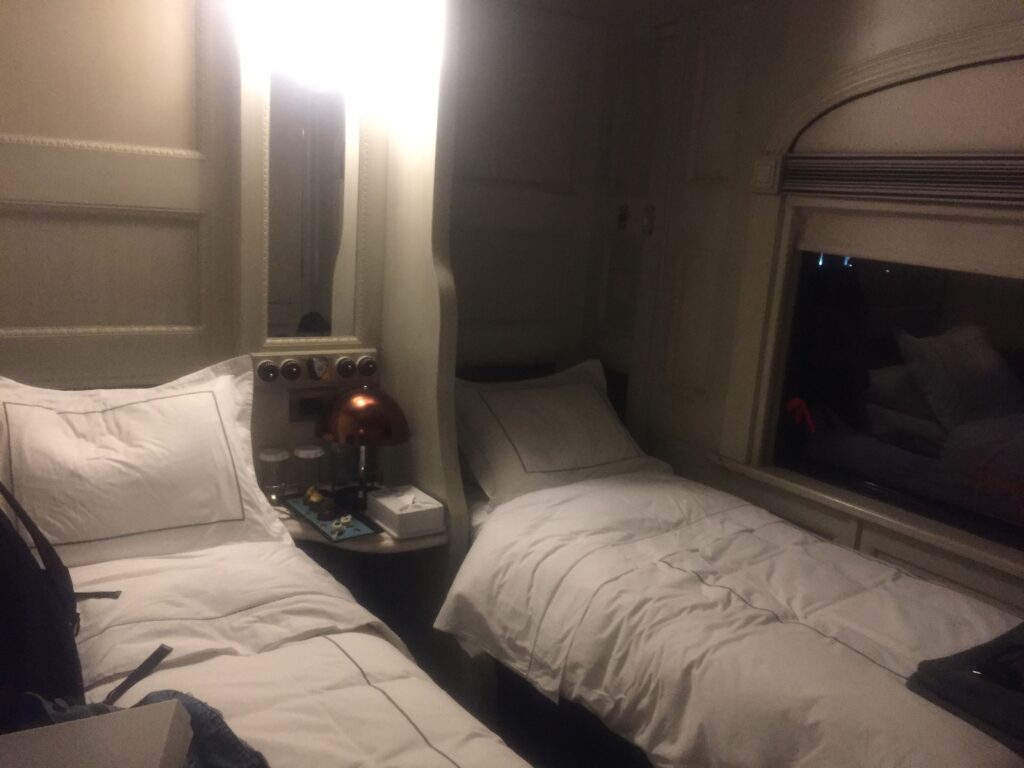
The most famous train routes are operated by PeruRail and Inca Rail, including the scenic journey from Cusco to Machu Picchu and the luxurious Andean Explorer from Cusco to Puno. If you’re willing to spend more money on this experience, it is a unique way to visit lesser-known parts of the country and partake in true luxury.
For the PeruRail and Inca Rail trains, more popular and affordable, the service classes range from standard (economical) to luxury classes. The luxury services, like the Belmond Hiram Bingham, offer fine dining and panoramic views. Train tickets, especially to Machu Picchu, can sell out quickly. Booking well in advance is recommended, particularly during high season (May to September).
Remember, train travel in Peru is less about getting from point A to point B and more about the experience, with routes designed to showcase the country’s stunning landscapes.
Local Transportation
- Buses and Minivans (Combis): Widely used for short distances within cities and towns. They are cheap but can be crowded and less comfortable.
- Biking and Walking: In smaller towns and rural areas, renting a bike or walking can be a pleasant way to explore. In Lima, I rented a bike to explore neighborhoods like Miraflores and Barranco, but I wouldn’t use it as a mode of transportation to cover larger distances.
Renting a Car in Peru
Car rentals are available in major cities, airports, and popular tourist destinations in Peru. Companies like Hertz, Avis, Budget, and local firms offer a range of vehicles. Renters typically need to be at least 25 years old, have a valid driver’s license from their home country, and have an International Driving Permit (IDP).
Rates vary based on the vehicle type and rental duration. Expect additional costs for insurance, which is highly recommended. In urban areas and major highways, roads are generally in good condition. However, roads can be challenging in rural areas and the mountains, often unpaved and narrow. For navigation, GPS can be unreliable in remote areas. Having a route already mapped out on apps like Waze and Google Maps and planning your route in advance is advisable.
In Peru, traffic rules may be more loosely interpreted than in other countries. Be prepared for an aggressive driving style, especially in cities. Gas stations are widely available in cities and major highways but less so in remote areas. Keep your tank full when traveling long distances. In cities, parking can be scarce and often comes with a fee. Many hotels offer parking, sometimes at an extra cost.
Benefits of Renting a Car:
- Flexibility: Allows a flexible itinerary and the ability to explore off-the-beaten-path destinations.
- Convenience: Particularly beneficial for traveling to areas with limited public transportation.
- Scenic Drives: Peru offers some incredibly scenic drives, particularly along the coast and highlands.
When going from Lima to Ica, my boyfriend and I rented a car, allowing us to leave whenever we wanted and drive at our own pace, stopping to eat and see other places. However, it was significantly more expensive than catching a bus, so this might not be the best option if you have a tight budget.
Considerations:
- Insurance: Check if your travel insurance covers car rental and what liabilities you might face.
- Safety: Keep valuables out of sight and be cautious when driving at night, especially in rural areas.
- Altitude: When driving in high altitudes, like the Andes, be aware of the effects of altitude sickness.
Best Places To Go in Peru
Peru is a wonderful country, with destinations that attend to different travel ‘vibes’. Because of that, there is no perfect destination or itinerary, and you need to build one according to your preferences. However, some destinations stand out as being favorites among travelers:
Lima
Lima, the capital city of Peru, presents a blend of the old and new. As a solo traveler, you’ll find Lima’s rich history in its colonial architecture, especially in the historic center, a UNESCO World Heritage site. The city is also the heart of Peru’s culinary scene, boasting some of South America’s finest restaurants and vibrant local markets. Don’t miss the bohemian district of Barranco, known for its colorful street art, cozy cafes, and lively nightlife. The city’s coastal location offers stunning Pacific Ocean views, particularly from the Miraflores district.
Although Lima isn’t the best place to savor the authentic Peruvian culture, it is a nice place to start your travels, indulging in good food, parties, and beautiful architecture.
Cusco
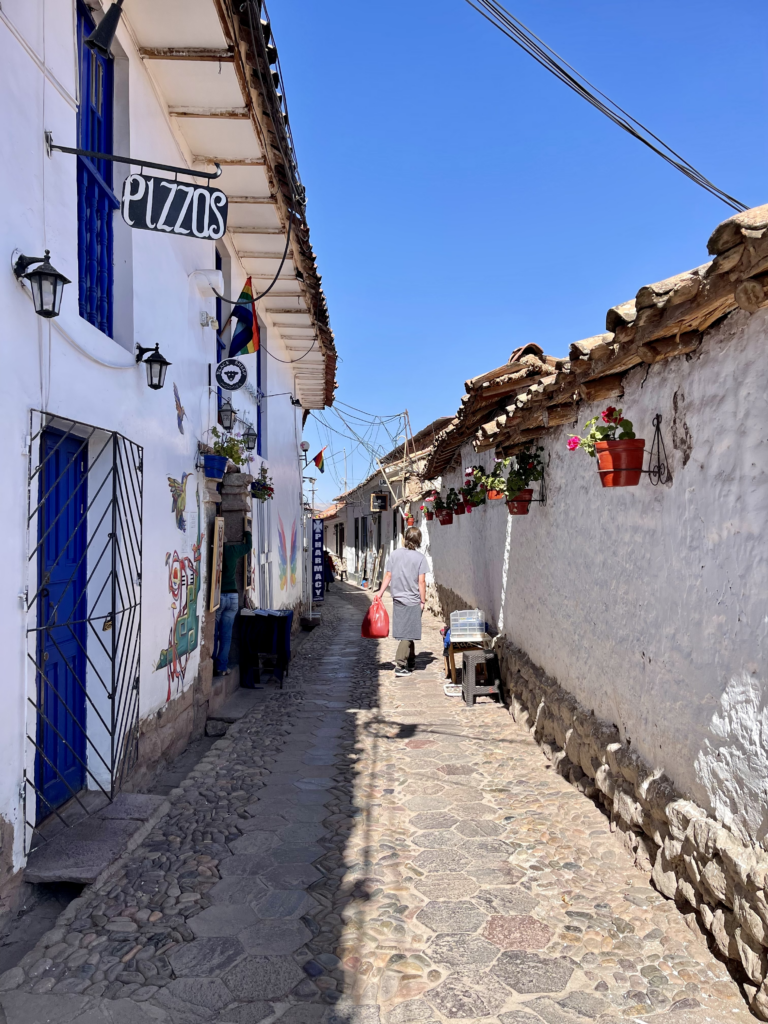
Cusco is by far my favorite city in Peru.
The city, once the capital of the Incan Empire, is steeped in history. Its narrow cobblestone streets, Inca ruins, and Spanish colonial buildings make it a cultural treasure. Cusco is the starting point for the famous Inca Trail to Machu Picchu, but there’s much to explore within Cusco itself, like the Plaza de Armas and the Sacsayhuamán fortress. The San Pedro Market and the bohemian San Blas neighborhood are perfect for experiencing local life. Cusco’s high altitude makes it a unique destination, blending Andean cultures and traditions.
When in Cusco, you can also embark on many different tours and activities across the Valle Sagrado, and I could easily spend a month here, always finding something new and exciting.
Arequipa
Arequipa is known for its stunning colonial architecture, with buildings crafted from a white volcanic stone called sillar, giving the city its nickname, the ‘White City’. Three impressive volcanoes surround the city, near the world’s second-deepest canyon, the Colca Canyon. Arequipa’s Santa Catalina Monastery is a must-visit for its colors and historical significance. The city also offers a thriving culinary scene, with local specialties like rocoto relleno (stuffed spicy peppers). It is the perfect place to unwind and relax, especially during the colder months.
Iquitos
Iquitos provides a gateway to the mysteries of the Amazon rainforest. This bustling city, accessible only by air or river, offers a unique urban experience amidst the dense jungle. It’s the perfect base for river cruises, wildlife observation, and visiting indigenous communities. The Belén Market in Iquitos is an eye-opening experience, showcasing the Amazon’s diverse flora and fauna.
Huacachina
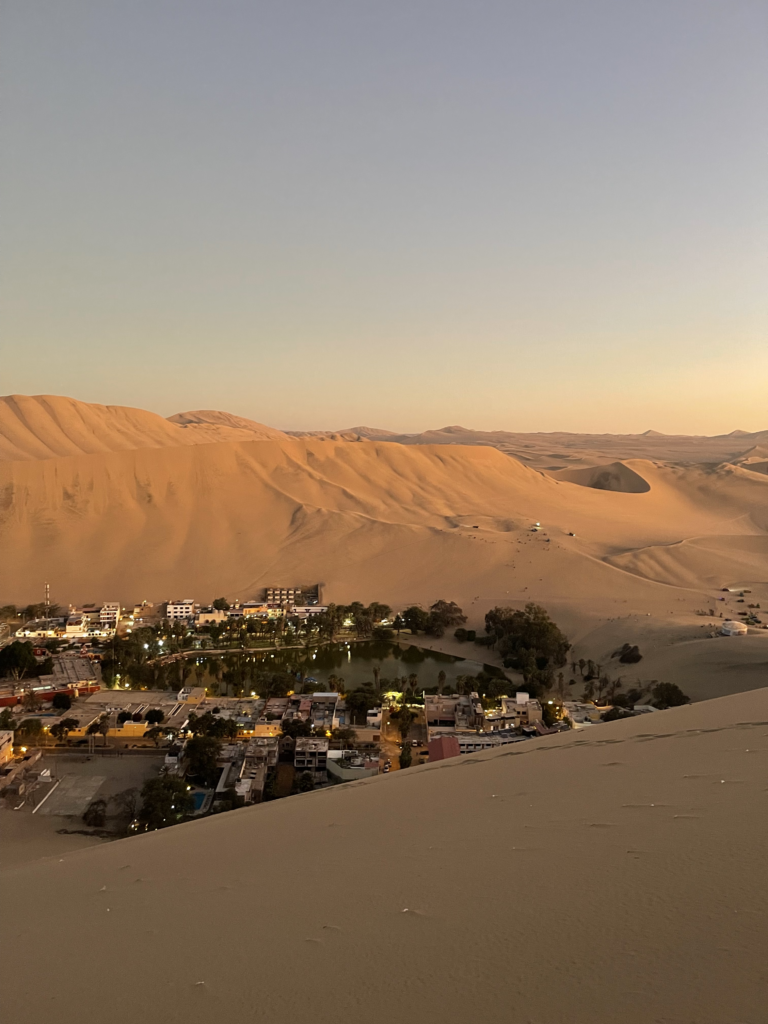
Definitely one of the coolest and most unique places I’ve ever been to. This small village, centered around a natural desert oasis, is an adventure lover’s paradise. Huacachina is encircled by enormous sand dunes, offering activities like sandboarding and dune buggy rides. The oasis itself is a calm spot where you can relax, swim, or enjoy a boat ride. It’s a surreal landscape that contrasts dramatically with the rest of Peru’s terrain. Also, there are hostels around the oasis that host amazing parties almost every night, and they are always packed with young and adventurous travelers.
Puno & Lake Titicaca
Puno, on the shores of Lake Titicaca, is famous for its rich cultural heritage. Lake Titicaca, the highest navigable lake in the world, is home to the unique floating islands of the Uros people, made entirely of reeds. Exploring these islands and interacting with the local communities offers a glimpse into an ancient way of life. The lake’s beauty, especially at sunrise or sunset, is truly captivating.
Huaraz
Nestled in the Andes, Huaraz is an outdoor enthusiast’s dream. It’s the gateway to the Huascarán National Park, where you’ll find some of the most stunning trekking routes in the world, including the Santa Cruz Trek. The region is dotted with turquoise lakes, towering peaks, and glaciers. Huaraz is also a great place to experience Andean culture and cuisine in a less touristy setting.
Other Destinations
Aside from the famous destinations in Peru, there are dozens of other hidden gems spread across the country. If you have enough time to visit them, these are some of the highlights:
- Chachapoyas: A hidden treasure in the Amazonas region, home to the ancient fortress of Kuelap and the Gocta Waterfall, one of the world’s tallest.
- Paracas: A lesser-known coastal town, ideal for nature lovers. It’s the gateway to the Paracas National Reserve and the Ballestas Islands, often called the ‘Poor Man’s Galapagos’.
- Ayacucho: Known for its 33 churches and rich history, Ayacucho offers a glimpse into Peru’s colonial past and vibrant cultural traditions, particularly during Holy Week celebrations.
- Tarapoto: in the San Martin region, Tarapoto offers lush rainforests, waterfalls, and a gateway to the high jungle. It’s less touristy, providing a more authentic Amazonian experience.
- The Sacred Valley: While more known than some other destinations, the Sacred Valley is often rushed through on the way to Machu Picchu. Spending more time here reveals charming villages, Incan ruins, and vibrant local markets.
Accommodation
Peru offers a diverse range of accommodation options to suit every type of traveler and budget. From budget-friendly hostels to exquisite luxury resorts, the choices are plentiful, each offering a unique experience of Peruvian hospitality.
Hostels and Budget Accommodation
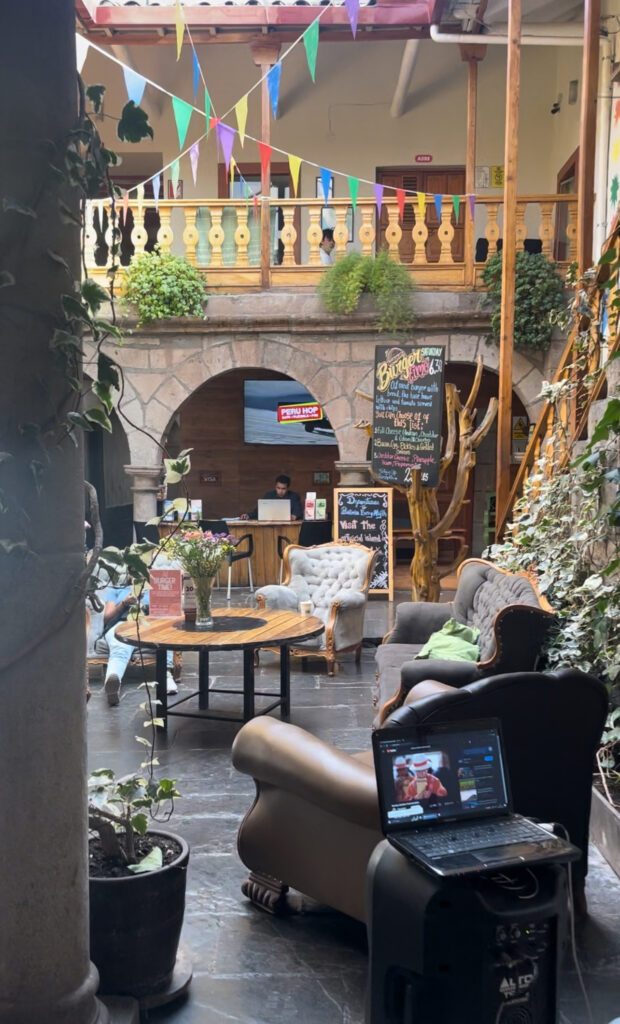
Peru is a country with a strong hostel game. While travelling around the country, I managed to only stay in amazing hostels, all super affordable and well-taken care of. In cities like Lima, Cusco, and Arequipa, hostels offer dormitory-style rooms or private rooms. They often have communal kitchens, social areas, and organize events, making them a hotspot for solo travelers and backpackers. Prices are very affordable, starting as low as $10 per night.
Budget hotels, on the other hand, provide more privacy with en-suite bathrooms and often include breakfast. While basic, they are clean and safe, ideal for travelers who prioritize comfort and affordability. Prices typically range from $25 to $50 per night.
Best Hostels in Peru
Here are some of the cities I visited, and the best hostels in each:
Lima
The best areas to stay in Lima are Miraflores and Barranco, which are safer and full of art, parks, restaurants, museums, etc. The two are right next to each other, and although they are more expensive in general, the infrastructure makes up for the price.
- Selina CoWork (Miraflores): The Selina chain is one of my favorites. The rooms are always super charming, and they always offer lots of activities and tours of the city. The hotel’s restaurant is lovely, and the bar has live music almost every day, always with happy hour specials and themed parties. The rooms are spacious and clean (both dorms and singles), with a beautiful design.
- Kokopelli (Barranco): Kokopelli is a chain similar to Selina in charm and space. Still, they only operate in Peru, so infrastructure is less expensive. They also have a delicious restaurant and bar, with various promotions, workshops, and events. For those who want a more “local” experience, it’s worth staying here.
Huacachina
Huacachina is an oasis in the desert, surrounded by hotels and hostels. There’s no shortage of accommodation options, and we saw several super cute hotels when we walked around.
- Wild Rover: Wild Rover is a hotel chain known for its parties and a young, international crowd. The hostel’s single rooms aren’t the most luxurious or beautiful, but they are spacious and have comfortable beds, as are the dorms. There’s a swimming pool and a bar next door, with delicious food and drinks and many events and themed parties.
Cusco
Cusco has a strong hostel culture, so plenty of great options exist. I recommend staying in the historical center or the San Blas district, the safest and most beautiful neighborhood, full of restaurants, bars, museums, and markets.
- Kokopelli: The Kokopelli in Cusco is beautiful, spacious, and full of life. They organize events and promotions in the bar almost every day of the week, offer various tours, and have several communal spaces for relaxing, working, and socializing. The rooms are comfortable, but the dorms sleep 8-12 people.
- Selina Plaza de Armas: super charming and cozy, with a delicious restaurant, massage, coworking space, and a clothing and accessories shop. Like any Selina, the rooms are superbly decorated and spacious, but the vibe is a little quieter than the Kokopelli.
Mid-Range Hotels and Boutique Properties
Mid-range hotels offer amenities like Wi-Fi, on-site dining, and sometimes pools or fitness centers. They’re found in both urban and rural areas, providing a comfortable stay without the luxury price tag. Expect to pay around $60 to $120 per night.
Boutique Hotels are characterized by their unique design, personalized service, and often locally inspired decor. They’re ideal for travelers seeking a more intimate and authentic experience. Prices can vary greatly depending on the location and level of luxury. Most of these hotels are found in rural areas, where travelers want an immersion into local culture.
Luxury Resorts and High-End Hotels
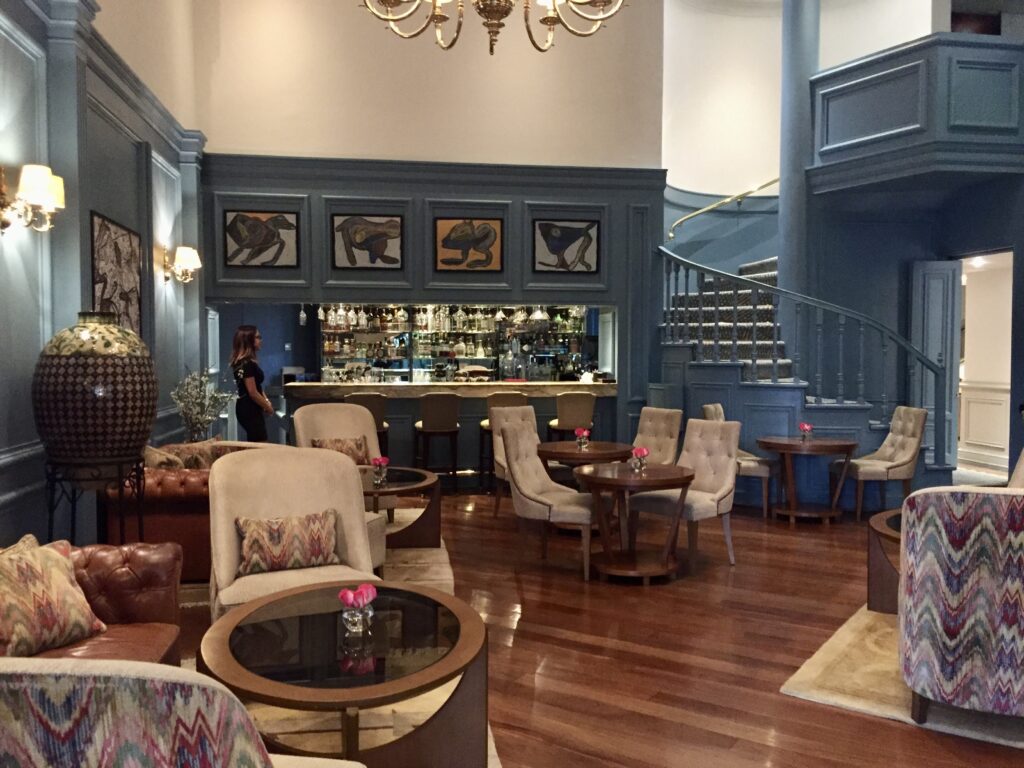
In destinations like the Sacred Valley or coastal areas, luxury resorts often feature stunning architecture, spa services, gourmet dining, and sometimes even include experiences like guided tours. Prices are typically upwards of $200 per night.
High-End Hotels, on the other hand, are found in major cities and tourist hotspots, offering world-class amenities, exquisite dining options, and impeccable service. These hotels cater to those seeking the utmost in luxury and comfort, with prices often exceeding $250 per night.
Homestays and Guest Houses
Homestays offer a unique cultural exchange, where you can participate in family activities and enjoy homemade local meals. They’re particularly popular in rural areas and smaller towns. Prices are very reasonable, often including meals. As always, be careful and make sure the families or individuals hosting you have good reviews on whichever app you are using.
Guest Houses are typically family-run, providing a cozy, home-like atmosphere. They offer fewer rooms than hotels, ensuring a quiet, personalized experience. They are a great option for those seeking a tranquil retreat with a local touch, especially in rural areas.
House-Sharing Apps
Platforms like Airbnb offer a wide range of options, from a room in a shared apartment to luxurious villas. They provide the comfort of a home and are a great way to meet locals. Prices can range from budget-friendly to high-end, depending on the property. In big cities like Lima and Cusco, there are plenty of Airbnb options to rent, and you can always find them in smaller towns as well. For those who want more autonomy, this is the perfect accommodation.
Eco-Lodges and Specialized Accommodations
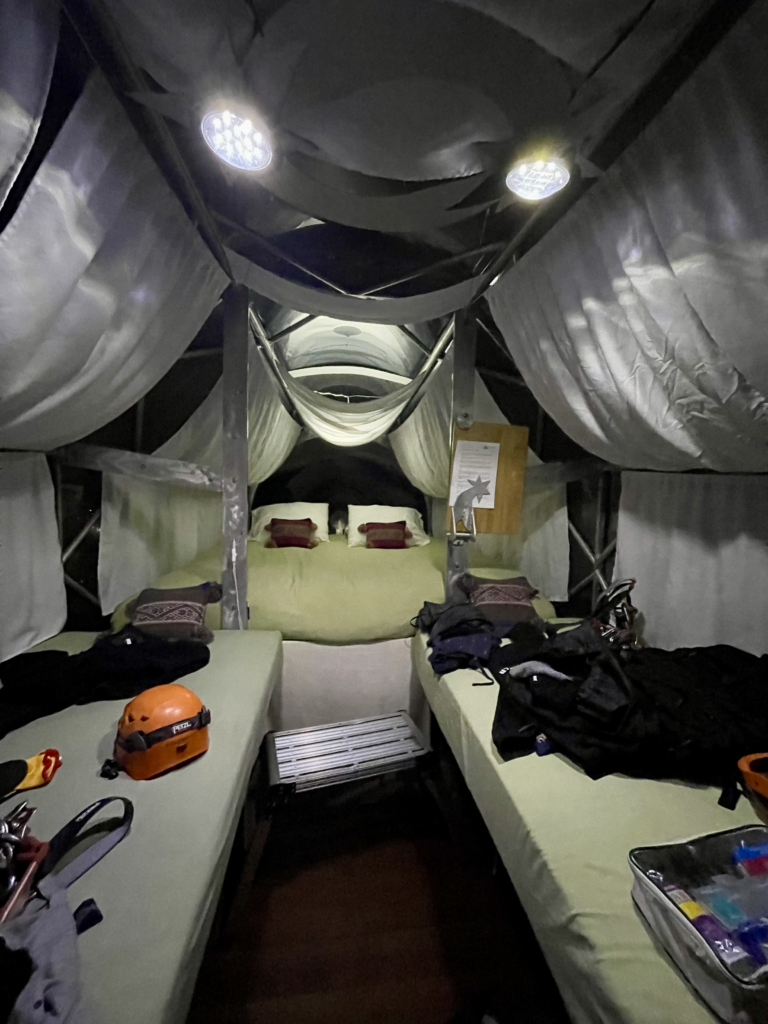
Eco-Lodges are often located in the Amazon rainforest and other natural areas, focusing on environmental sustainability and offering guided nature tours. They provide a unique way to experience Peru’s natural beauty. Specialized Accommodations cater to specific interests like wellness retreats, vineyard stays, or historical haciendas. They offer unique experiences like wine tasting, yoga sessions, or horseback riding. Peru is filled with options for both, and I highlight recommend spending at least a night at a unique accommodation and experiencing something new.
Culture, Language & The People of Peru
Language Basics and Communication Tips
While traveling through Peru, I found that even a little Spanish goes a long way (I’m fluent, but my partner isn’t, and his little Spanish skills helped him a lot). In bustling markets of Lima or on the winding streets of Cusco, locals always appreciated my efforts to speak their language. Phrases like “¿Dónde está el baño?” (Where is the bathroom?) and “Una cerveza, por favor” (One beer, please) were his go-to’s. The smiles he received in return made every stumbled conversation worth it.
In rural areas, where Quechua is more common, I learned that gestures and smiles bridge many language barriers. A friendly attitude and patience in communication can make all the difference. Because they receive a large influx of tourists all year long, Peruvian people are patient and always want to help.
Interaction with Locals and Cultural Etiquette
When I met my host in Arequipa, a firm handshake was followed by a warm “mucho gusto” (nice to meet you). It set the tone for a respectful yet friendly relationship. In Peru, addressing someone with respect is key. I always started with “Señor” or “Señora” until they suggested otherwise. This respect is especially crucial in rural or traditional communities. In a small mountain village, I learned that direct eye contact isn’t always common, especially among the older generations. Recognizing and adapting to these subtle cultural norms was essential for respectful interactions.
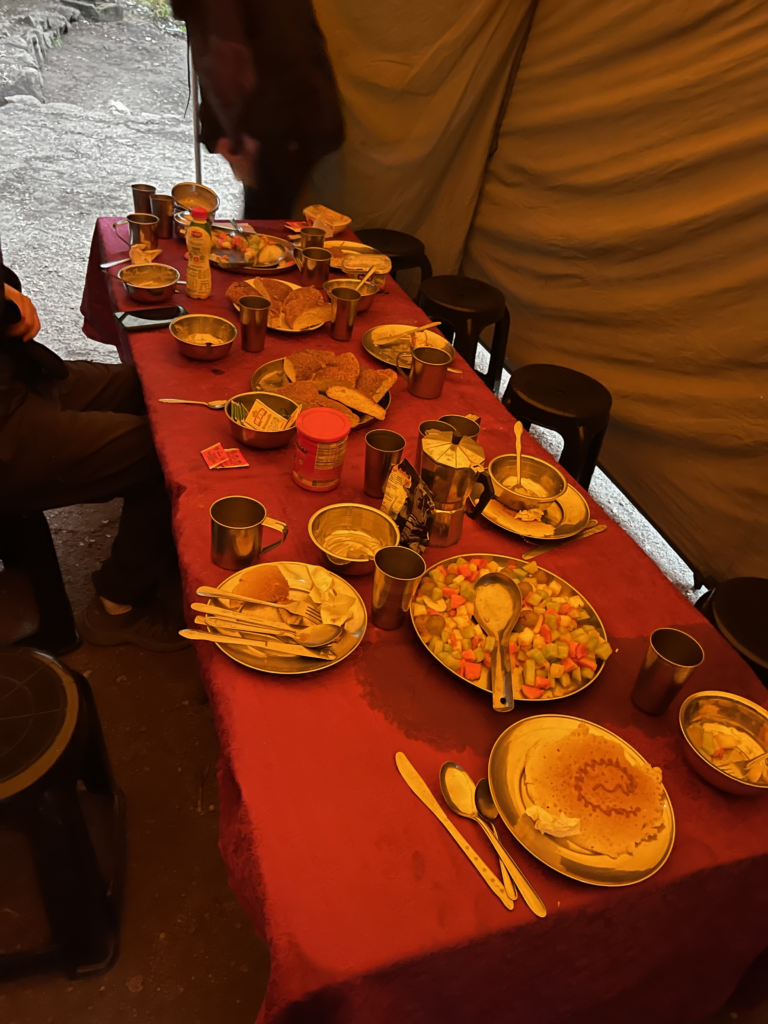
Polite vs. Rude Behaviors
Being punctual for formal engagements, respecting local customs and traditions, and being modest in dress and behavior are all signs of politeness and respect. Offering my seat to an elderly person on a crowded bus in Lima was met with nods of approval. Small acts of kindness are deeply valued.
Refusing food or drink offered by a host can be seen as rude. Loud or boisterous behavior in public, especially in religious or traditional settings, is frowned upon. While dining in a local’s home, I made sure to finish everything on my plate. Declining food can be perceived as rude, something I learned early in my travels.
Local Festivals and Community Events
Here are some of the most famous and important holidays and festivities in Peru:
- Inti Raymi Experience: Held in Cusco on June 24th, this Inca festival celebrates the winter solstice and the Inca sun god. Witnessing Inti Raymi was a spectacle of colors, music, and history. The reenactment of Inca rituals in the Sacsayhuamán fortress was a profound insight into ancient traditions.
- Semana Santa in Ayacucho: Especially vibrant in Ayacucho, it features religious processions and traditional festivities.
- Puno’s Fiesta de la Candelaria: In Puno, held in early February, it’s one of Peru’s most colorful festivals with music, dance, and elaborate costumes.
- The Lord of the Miracles (El Señor de los Milagros): A religious procession held in Lima in October, featuring a massive purple-clad parade.
- Local Markets and Community Gatherings: Participating in local markets and community events can provide a deep insight into Peruvian daily life and culture. It’s a great way to interact with locals and experience the diversity of Peruvian society.
Activities and Experiences
Peru is paradise for those who love nature. With an extensive coastline, access to the Amazon forest, and the Andes expanding on the south of the country, there are no limits to what you can do when it comes to being in connection with the pacha-mama (mother nature in Peruvian cultures).
Beaches, Jungles, and Urban Explorations
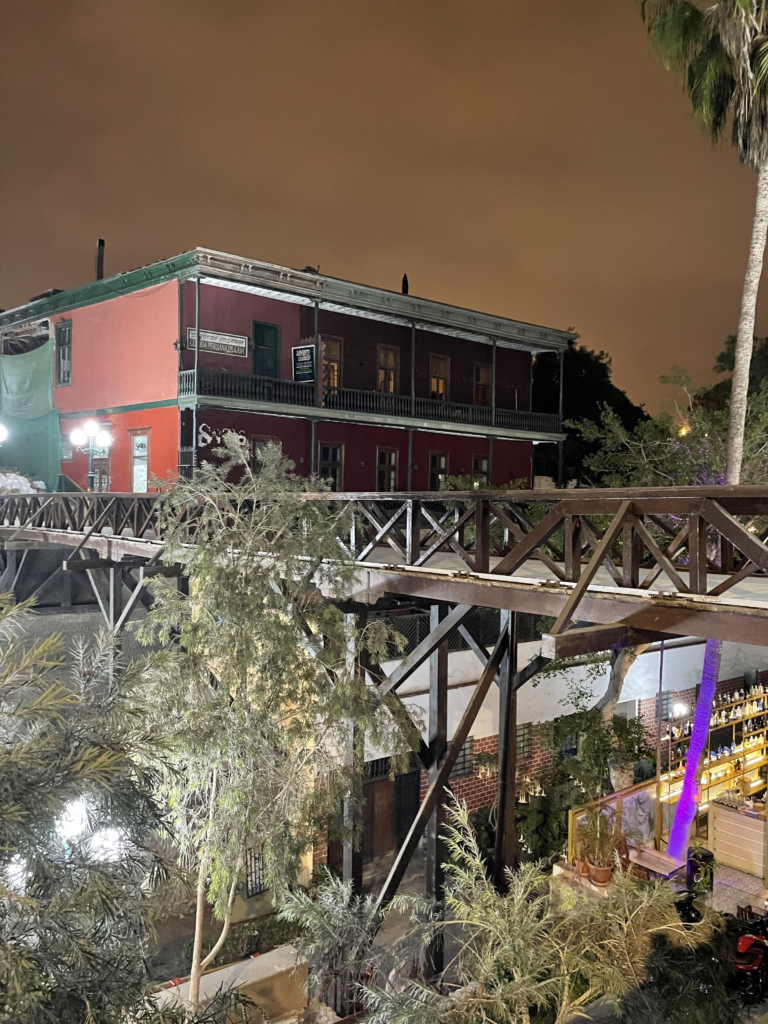
Beaches
Peru’s coastline surprised me with its variety. From the popular, lively beaches of Máncora, known for great surfing and vibrant nightlife, to the secluded shores of Punta Sal. You can enjoy sunbathing, seafood, and the occasional beach volleyball game.
- Máncora: Known for its surfing and vibrant nightlife, Máncora is a haven for beach lovers and party-goers.
- Punta Sal: Offers tranquil beaches perfect for relaxation and enjoying Peru’s coastal beauty.
- Paracas: Close to Lima, known for its wildlife and the Ballestas Islands, often called the “Poor Man’s Galapagos.”
Jungles
Venturing into the Amazon from Iquitos is a Peruvian highlight. The dense rainforest, rich wildlife, and the symphony of sounds at night were unforgettable. You can even spent a night in a jungle lodge, which is both thrilling and calming all at once.
- Iquitos: Gateway to the northern Amazon. Tours often include river cruises, visits to indigenous communities, and canopy walks.
- Puerto Maldonado: Located in the southern Amazon, it offers access to diverse ecosystems and wildlife reserves like Tambopata.
- Manu National Park: A biosphere reserve offering one of the most biodiverse experiences, with opportunities for bird watching and encountering rare wildlife.
Urban Exploration
Lima’s historical center, with its grand colonial architecture and bustling street life, provided a rich cultural experience. Exploring the Barranco district, with its artistic vibe and hip cafes, was a perfect way to spend a late afternoon.
- Lima: The historic center is a UNESCO World Heritage site, while the Miraflores district offers modern amenities and seafront walks.
- Cusco: Explore the Inca and Spanish colonial history, museums, and vibrant markets like San Pedro.
- Arequipa: Renowned for its stunning white volcanic stone architecture and the impressive Santa Catalina Monastery.
Adventure Activities
Hiking
Probably the top activity in Peru, especially when you venture into the Andes. The Valle Sagrado is packed with different routes and treks for different levels, covering steep climbs or leisure walks that always take you to a ruin or a natural paradise. Trekking the Inca Trail to Machu Picchu was challenging but rewarding. The view of the ancient city at sunrise was worth every step. In Huaraz, the Santa Cruz Trek offers stunning Andean landscapes.
- Inca Trail to Machu Picchu: A bucket-list trek offering stunning views and Incan ruins.
- Santa Cruz Trek in Huaraz: Known for its breathtaking Andean scenery, including turquoise lakes and high mountain passes.
- Colca Canyon: Offers various trekking routes with chances to see Andean condors and traditional villages.
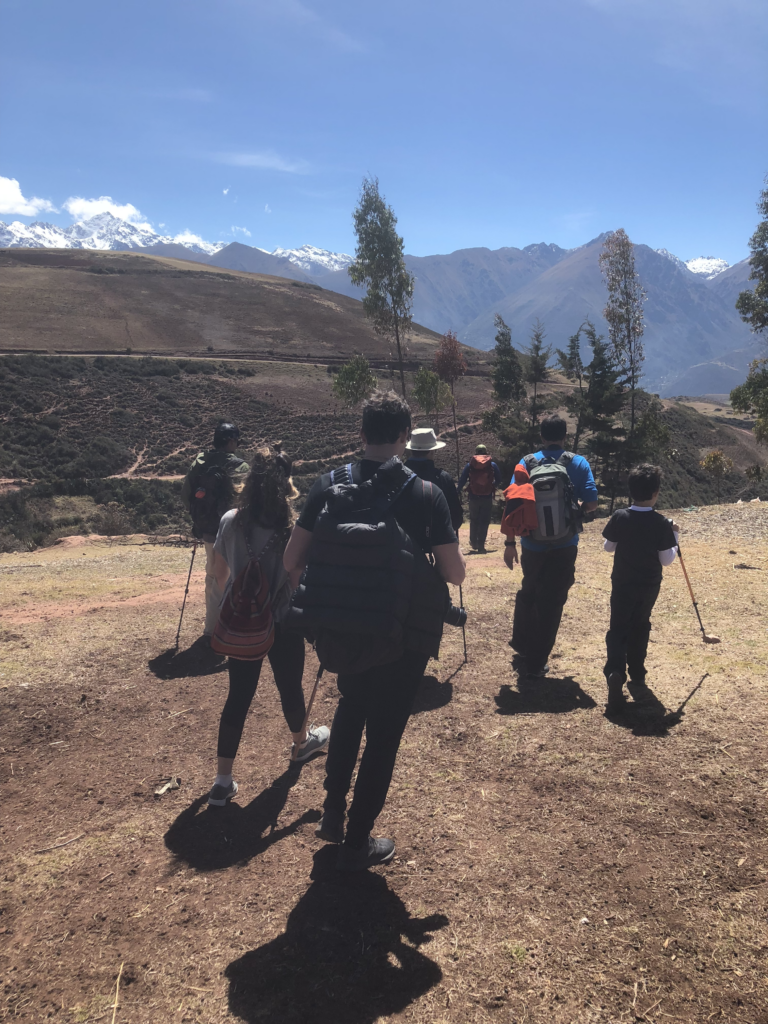
Surfing
Peru’s long Pacific coastline is a paradise for surfers. You can catch some excellent waves in Huanchaco and enjoy the laid-back surf culture there.
- Huanchaco: Famous for its long left-hand break and traditional reed fishing boats.
- Lobitos: A quieter destination with consistent waves, suitable for experienced surfers.
- Chicama: Home to one of the world’s longest left-hand waves, attracting surfers from around the globe.
Wildlife Watching
In the Tambopata National Reserve, you can spot macaws, capybaras, and even an elusive jaguar. Boat trips on the Amazon River offer glimpses of pink river dolphins and countless bird species.
- Tambopata National Reserve: Offers one of Peru’s densest concentrations of wildlife.
- Pacaya-Samiria National Reserve: Accessible from Iquitos, known for its rich biodiversity and river-based tours.
- Ballestas Islands: Home to sea lions, penguins, and a myriad of bird species, easily accessible from Paracas.
Wellness and Spiritual Experiences
Healing Spas
In the Sacred Valley, many people visit spas that offer treatments using local herbs and traditional techniques. The tranquility and connection to nature are truly rejuvenating.
- Sacred Valley: Many retreats offer spa treatments using Andean techniques and local ingredients.
- Aguas Calientes: Hot springs in the town near Machu Picchu provide a relaxing escape after a day of hiking.
- Lares Hot Springs: Located in a more remote part of the Sacred Valley, ideal for a quiet, rejuvenating experience.
Yoga Retreats
There are numerous retreats, especially in Cusco and the Sacred Valley, where the serene environment and spiritual history of the land enhance the yoga experience. Participating in a yoga session with the backdrop of the Andes is a moment of pure bliss, perfect for those who want to conect with nature and with themselves.
- Cusco and Sacred Valley: Known for their serene environments and spiritual significance.
- Máncora: Offers beachfront yoga retreats combining relaxation with ocean views.
- Iquitos: Jungle retreats provide a unique backdrop for yoga and meditation, enhancing the connection with nature.
Spiritual Ceremonies
Many travelers participate in an Ayahuasca ceremony, led by local shamans. These are profound spirituals journey. But remember, it’s important to approach these experiences with respect and an open mind.
- Ayahuasca Ceremonies: Often held in the Amazon region, led by experienced shamans.
- Cusco and Sacred Valley: Local shamans conduct traditional Andean ceremonies, offering insights into indigenous spiritual practices.
- Lake Titicaca: Participate in traditional ceremonies on the shores of the sacred lake or on islands like Amantaní.
Finding Great Places To Eat Food and Drink
Peru’s culinary landscape is as diverse as its geography, blending indigenous traditions with Spanish, African, Asian, and European influences. This fusion has resulted in a unique and delicious cuisine, recognized worldwide.
Brief History of Peruvian Cuisine and Regional Differences
Peruvian cuisine is a melting pot of influences that reflect the country’s diverse history and geography. It began with the traditional practices of the indigenous peoples, primarily the Inca, who cultivated staples like potatoes, maize, and quinoa. The Spanish conquest in the 16th century introduced new ingredients like rice, wheat, and meats (beef, pork, and chicken), along with culinary techniques from Europe.
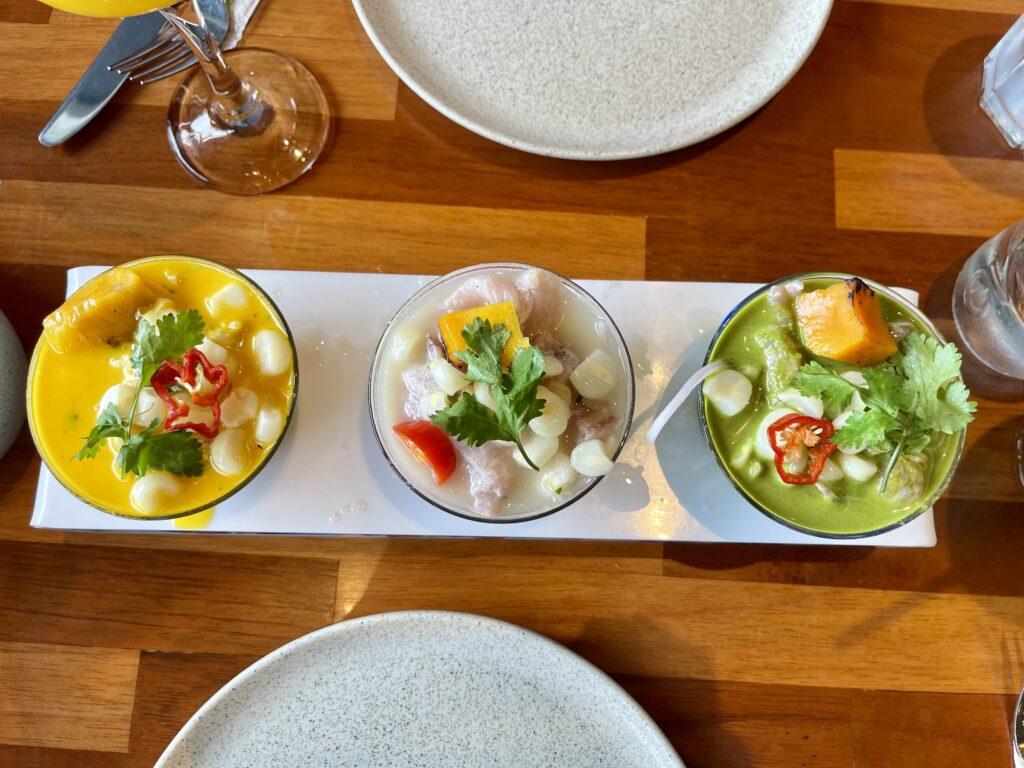
The 18th and 19th centuries saw an influx of immigrants from Africa, China, Japan, and Italy, each adding their unique flavors and methods to Peruvian cooking. The African influence is evident in dishes using offal and tubers, while Chinese immigrants, or the “coolies,” brought stir-frying and rice-based dishes, leading to the popular ‘Chifa’ cuisine, a fusion of Chinese and Peruvian flavors. The Japanese influence, known as ‘Nikkei cuisine,’ introduced raw fish preparations, influencing dishes like tiradito.
Regional Differences in Peruvian Cuisine
Thinking ceviche will be good all over Peru is like thinking pizza is phenomenal in all Italian cities. Because the country has such diverse ecosystems, each region has developed its own particular cuisine, and knowing where to look for certain dishes will make your experience even more authentic and phenomenal.
Must-Try Dishes
- Ceviche: The national dish, typically made with fresh raw fish marinated in lime juice, spiced with chili peppers, and accompanied by onions, sweet potatoes, and corn. The best ceviche is in Lima, or other coastal cities (I recommend La Rosa Nautica in Lima, where I ate the best ceviche of my life)
- Lomo Saltado: A stir-fry that combines marinated strips of sirloin with onions, tomatoes, and other ingredients, served with rice and French fries. It is such a comfort food, and you can find it all over Peru.
- Aji de Gallina: A creamy and slightly spicy dish made with shredded chicken in a sauce of milk, bread, yellow Peruvian chili, garlic, and cheese. Pretty good for those winter months when it’s cold outside and the aji warms up your heart.
- Causa Rellena: A cold appetizer made from layers of mashed potato mixed with key lime, onion, and chili, and filled with tuna or chicken. It is zesty and light and perfect for a small meal.
- Rocoto Relleno: Spicy bell peppers stuffed with minced meat and vegetables, topped with melted cheese.
- Alpaca Steak: Tender and flavorful, it’s a healthier alternative to traditional beef and is commonly served in the Andean region. Alpaca meat is leaner than beef, very flavorful, and definitely worth the try.
- Cuy: This is guinea pig meat, with a crispy skin and juice meat. Many people avoid eating up because guinea pigs are so cute, but it is an authentic experience, and I recommend you try it at least once.
Finding Good Local Spots
I’ve found that asking local residents or staff at your accommodation leads to discovering some hidden gems. They know where to find authentic and delicious meals at good prices. And, obviously, the best eateries are almost never the most fancy or expensive ones. Peruvian food is people’s food, so most of the best dishes will be super affordable.
Visiting local markets is not only a culinary adventure but also an insight into Peruvian culture. Markets like Mercado San Pedro in Cusco offer a range of fresh produce and cooked meals. I used to go to these markers almost every day for fresh fruit juice in the morning. For a unique experience, I recommend visiting a local chifa (Chinese-Peruvian restaurant). The fusion dishes they create, like Arroz Chaufa (Peruvian fried rice), are a testament to Peru’s multicultural influences.
Joining a food tour, especially in cities like Lima, can also be a great way to sample a variety of dishes and learn about the culinary history.
Street Food
Peru has great street food, some of the best being:
- Anticuchos: Grilled skewers of marinated meat (often beef heart) are a popular street food.
- Picarones: A sweet treat, these are Peruvian doughnuts made from squash and sweet potato, deep-fried and served with a sweet syrup.
- Juices and Smoothies: With Peru’s abundance of tropical fruits, the juice bars found on many street corners offer fresh and delicious options.
Where to Eat | The Fame and the Hype
The Peruvian culinary scene has been thriving with a mix of established and emerging chefs, as well as a variety of restaurants that have been garnering significant attention both locally and internationally. Here’s a list of notable chefs and restaurants that were making waves in the culinary world, along with recommendations for tourists looking to savor authentic Peruvian cuisine.
Famous Chefs
- Gastón Acurio: Often credited with popularizing Peruvian cuisine globally, Acurio’s restaurants, especially “Astrid y Gastón” in Lima, are must-visit establishments for food enthusiasts.
- Virgilio Martínez: Known for his restaurant “Central” in Lima, Martínez is famous for his innovative approach to traditional Peruvian ingredients, often exploring the biodiversity of Peru.
- Mitsuharu Tsumura: Leading the Nikkei cuisine (Peruvian-Japanese fusion) with his restaurant “Maido” in Lima, Tsumura has been celebrated for his unique culinary fusion techniques.
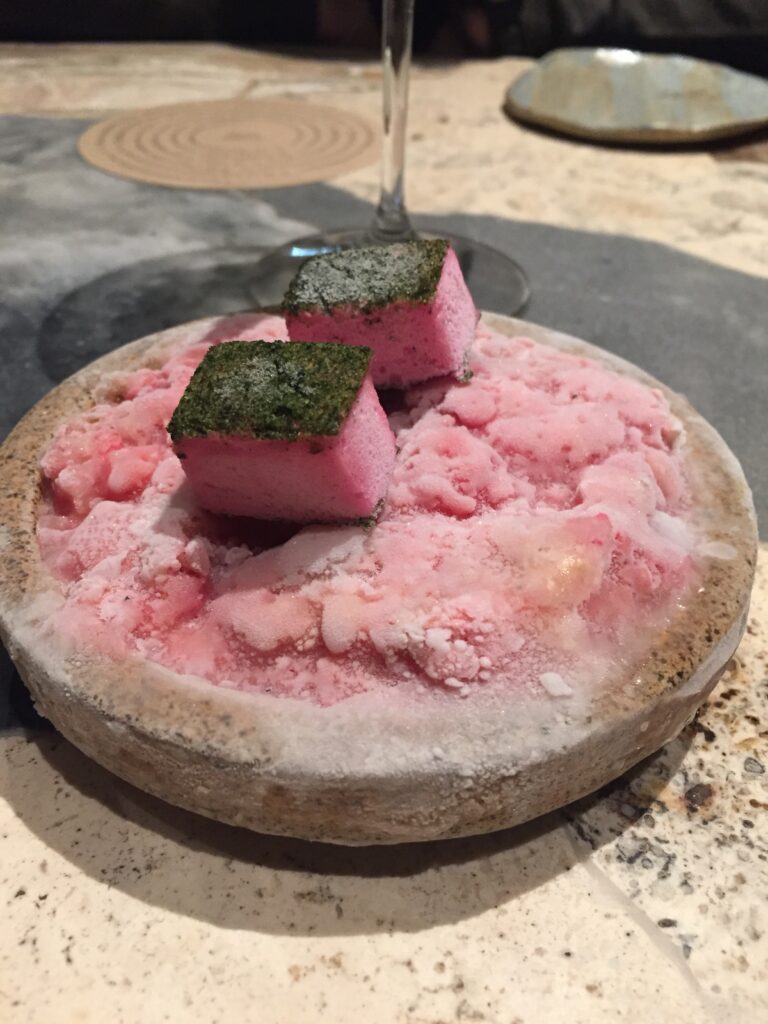
Hyped Restaurants
- Central (Lima): Offers an elevation-based tasting menu, showcasing the diversity of Peru’s ecosystems.
- Maido (Lima): A top spot for Nikkei cuisine, offering a blend of Peruvian and Japanese flavors.
- Astrid y Gastón (Lima): A flagship for modern Peruvian cuisine, combining local ingredients with international cooking techniques.
- Osso (Lima): A haven for meat lovers, known for its high-quality cuts and artisanal approach to butchery and charcuterie.
- La Mar (Lima): Acurio’s cevicheria, offering some of the freshest and most innovative ceviches in the city.
- Chicha (Cusco and Arequipa): Acurio’s restaurant that celebrates authentic Peruvian foods. Tasty, plentiful, and not so expensive. I ate my last meal in Peru there to celebrate the trip.
- Morena (Cusco): This was one of my favorite restaurants in Peru. The food is presented uniquely and beautifully, and everything has balanced flavors inside a beautiful dining room.
Tourist Recommendations for Trying Peruvian Food
- Local Markets: For an authentic and affordable experience, visit local markets like Mercado San Pedro in Cusco or Mercado de Surquillo in Lima.
- Street Food Stalls: Try street food delicacies such as anticuchos (grilled meat skewers) and picarones (Peruvian doughnuts).
- Picanterías in Arequipa: Traditional eateries serving local Arequipan cuisine, known for their spicy and flavorful dishes.
- Cevicherias: Coastal towns and cities like Lima are dotted with cevicherias, perfect for trying Peru’s national dish.
- Chifas: For a taste of the Chinese influence in Peruvian cuisine, visit a Chifa restaurant, available in most cities.
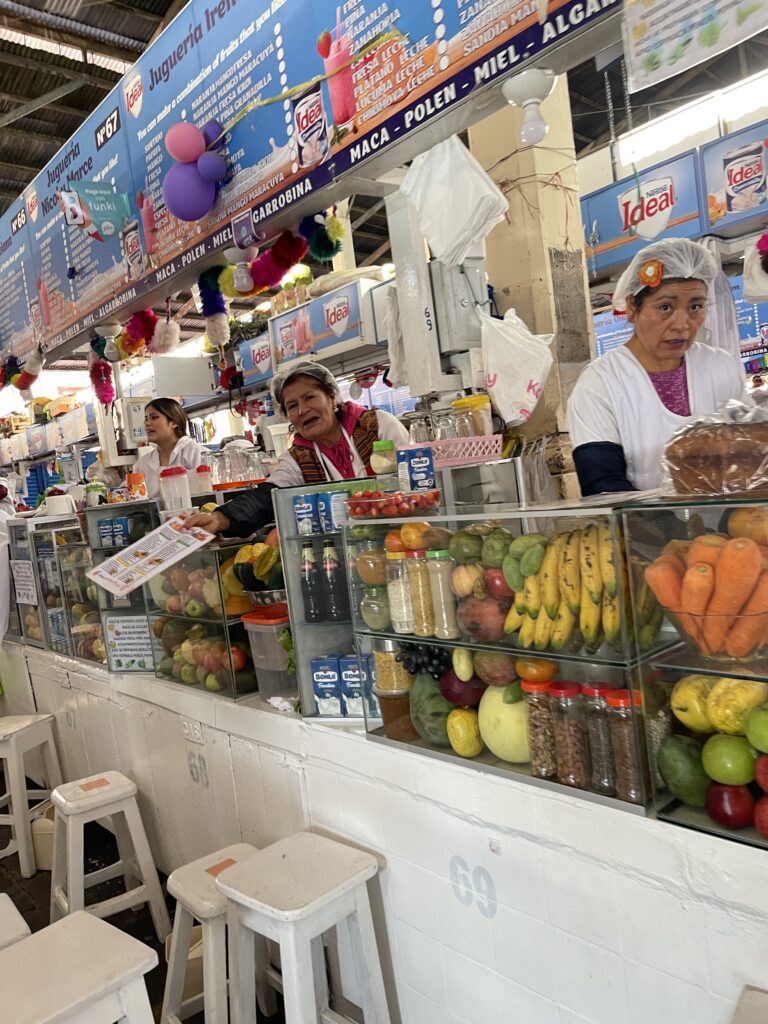
Peru’s culinary landscape is as diverse as its geography, offering something for every palate, from street food to gourmet dining. These chefs and restaurants not only highlight the traditional flavors of Peru but also innovate and elevate them to new heights, making Peruvian cuisine a global phenomenon.
Packing Tips
Packing for Different Regions and Activities
Coastal Areas
In the coastal regions like Lima and Máncora, you’ll experience a mild to warm climate, especially during the summer months (December to April). For these areas, lightweight and breathable clothing is a must to stay comfortable under the sun. Think cotton shirts, shorts, and summer dresses. The coast is also synonymous with beautiful beaches, so swimwear is essential for enjoying the Pacific waters. Whether you’re lounging on the beach or trying your hand at surfing, don’t forget to pack sun protection – sunscreen, sunglasses, and a wide-brimmed hat are key to guarding against the strong coastal sun.
Andean Highlands
The Andean region, which includes places like Cusco and Huaraz, can be quite a contrast with its cooler and more variable weather. Here, layering is your best strategy. During the day, the sun can be warm, but temperatures drop significantly after sunset. Pack a mix of short and long-sleeved shirts, a fleece or sweater, and a good-quality jacket, preferably waterproof if you’re visiting during the rainy season (November to March). Sturdy footwear is essential, especially if you plan on hiking or exploring archaeological sites like Machu Picchu. The terrain can be rough and uneven, so comfortable, supportive hiking shoes or boots are advisable. Also, given the altitude, a hat and gloves can be a lifesaver for chilly mornings and evenings.
Amazon Rainforest
Preparing for the Amazon, such as trips to Iquitos or Puerto Maldonado, demands gear for a hot, humid, and rainy environment. Insect repellent is non-negotiable to protect against mosquitoes, and so is lightweight, long-sleeved clothing to cover your skin. Opt for breathable fabrics to stay cool while shielding yourself from insect bites. Waterproof bags or cases are a smart addition to keep your electronics and important documents safe from sudden downpours and the general humidity of the rainforest. You might also consider a light raincoat or poncho, as tropical showers can be frequent and unpredictable.

Considerations for Different Seasons
The dry season, spanning from May to October, is generally the best time for outdoor activities across Peru. In the Andes, the days are clear, but nights can be quite cold, so warm clothing is essential. I went to Peru in June, and it was the best time to go. Although it was cold, the sky was clear everyday, and we were able to do all the outdoors activities we wanted. On the other hand, the wet season from November to April sees heavier rainfall, particularly in the jungle and highland areas. This calls for waterproof clothing and sturdy, water-resistant footwear.
Incorporating these region and climate-specific packing tips will ensure you’re well-prepared for the diverse experiences Peru offers, from sun-drenched coastal towns and chilly Andean heights to the humid Amazonian jungles. Remember, being prepared with the right gear will greatly enhance your enjoyment and comfort as you explore the rich landscapes and cultures of Peru.
Sustainable Packing Tips
Eco-Friendly Products
Packing biodegradable toiletries is a simple yet effective way to reduce environmental impact. Products like soap, shampoo, and toothpaste, especially those without harsh chemicals, are kinder to the ecosystems you’ll encounter, particularly in sensitive areas like the Amazon Rainforest. I packed solid versions of shampoo, conditioner, and soap, which reduced the weight on my bag and gave it more space.
Carrying a reusable water bottle is another key sustainable practice. With concerns over water quality, you might be tempted to buy bottled water, but a reusable bottle, perhaps with a built-in filter or accompanied by water purification tablets, is a more eco-conscious choice. In sunny Peru, a solar charger can be an excellent addition to your gear, reducing reliance on electricity and making use of abundant sunlight, especially in high-altitude areas and open terrains.
Minimizing Waste
- Pack light to minimize carbon emissions during transportation.
- Bring reusable bags for shopping or storing items.
- Use digital copies of important documents to avoid unnecessary printing.
Packing light not only makes your travel more comfortable but also contributes to lower carbon emissions, especially in air travel. Using reusable bags for shopping or even day-to-day packing within your suitcase helps reduce plastic waste. As for documentation, digitizing items like boarding passes, hotel reservations, and travel itineraries minimizes paper waste.
Staying Connected
In Peru, staying connected is relatively easy and affordable, especially if you plan on using a local SIM card for your mobile device. This is an efficient way to have access to data and local calls, which can be particularly handy for navigating translations, and local recommendations. I bought a local SIM card my first day in Lima and it kept me connected for the entire time, all over the country.
Choosing a Network
The main mobile network operators in Peru are Claro, Movistar, and Entel. Claro and Movistar have the widest coverage, including in more remote areas, making them a preferred choice for travelers. Entel is also a good option, often praised for its competitive pricing and reliable service in urban areas.
Purchasing a SIM Card
You can buy a SIM card either at the airport upon arrival or at numerous stores and kiosks in cities and towns. While it’s convenient to purchase one at the airport, you might find more competitive prices in the city. To buy a SIM card, you’ll usually need to show your passport.
Costs
The cost of a SIM card itself is typically low, often around 5 to 20 soles (approximately $1.50 to $6). Prepaid data packages vary but expect to pay around 30 to 50 soles ($9 to $15) for a package with a decent amount of data (around 3GB to 5GB), which should suffice for a couple of weeks of moderate use. Many plans include some local calls and texts, which can be useful for reservations or local inquiries.
When choosing a plan, consider how much data you’ll need based on your usage habits and the length of your stay. For most travelers, a basic prepaid package will be sufficient, especially if supplemented with Wi-Fi usage in hotels, cafes, and restaurants. Remember, Wi-Fi availability is widespread in urban areas and tourist spots, but can be spotty in remote regions, making a local SIM card a more reliable option for staying connected.
Currency
Navigating the financial aspects is an essential part of travel planning, and in Peru, understanding the local currency, cash usage, credit card acceptance, ATM availability, and the use of US dollars can make your trip smoother.
Local Currency
The local currency in Peru is the Sol (PEN). Banknotes come in denominations of 10, 20, 50, 100, and 200 soles, while coins are in denominations of 1, 2, and 5 soles, and smaller centimo coins.
Cash or Credit Card?
Cash is king in many parts of Peru, especially in smaller towns, local markets, and for street vendors. It’s always good to have a sufficient amount of cash on hand for such transactions. Credit cards are widely accepted in larger cities, tourist areas, and at mid-range to upscale restaurants and hotels. Visa and MasterCard are the most commonly accepted. Be aware that some smaller businesses may add a surcharge for credit card use.
ATM Availability
ATMs are readily available in urban areas and larger towns. They are the most convenient way to withdraw soles or US dollars. In rural or remote areas, ATMs can be scarce. It’s advisable to withdraw enough cash when in larger cities. Check with your bank about international withdrawal fees and inform them of your travel plans to avoid any issues with your card while abroad.
I took some US dollar with me and changed it at exchange houses (you can find plenty of them in larger cities like Lima, Cusco and Arequipa).
Using US Dollars
US dollars are widely accepted in many tourist areas, but usually at less favorable exchange rates. It’s more economical to pay in soles, especially for everyday purchases. Ensure that your US dollar bills are in good condition; worn or torn bills might not be accepted.
Additional Tips
- Exchange Rates: Be aware of the current exchange rate. Currency exchange services are available at airports, banks, and authorized exchange houses.
- Budgeting: Carry a mix of small and large denomination notes to ease transactions.
- Safety: As with any travel, carry cash discreetly and don’t keep all your money in one place.
Safety Concerns
Traveling solo in Peru is an enriching experience, offering an unparalleled sense of freedom and adventure. However, like any destination, it comes with its own set of safety considerations. Being informed and prepared is key to ensuring a secure and enjoyable journey. As a solo traveler, especially a female, I can tell you that Peru is a generally safe country when you stay in the safer areas. People are usually pretty welcoming, and knowing the local language was a plus for me to gain points with locals, who were more than eager to always help.
Still, it is an impoverished South American country, which means you need to be careful.
Tips for Staying Safe
Areas to Avoid:
Avoid certain parts of large cities, especially at night. In Lima, be cautious in areas like Callao and some parts of Centro Lima after dark. The city can be chaotic around the historic centre, especially at night, and it is best to avoid walking by yourself. Also, stay away from remote areas without a guide or proper preparation. Most tourist cities and zones are usually pretty safe, but for those of us who want to venture off the beaten path, it is best to always be cautious.
Common Scams:
There are some cases of overcharging by taxis or vendors, especially if they can tell you’re a tourist. Always agree on a price before the service, and don’t feel bad if you lightly fall for one of these on your first day – it takes some time to get used to the actual prices of things in a new country. Ask people who have been to Peru, or your hotel concierge, about fair prices so you know what to negotiate and expect.
There are rare cases of fake police officers demanding to see your documents. Verify their identification and never hand over your passport. When I rented a car to go to Huacachina from Lima, the guy at the rental place warned me about this, saying that sometimes the police will stop you and ask from the car documents, charging fees that should not be charged. In case this happens, call the rental company, or ask them for verification and credentials (thankfully that didn’t happen).
Safety Gear:
- Use a money belt or a hidden wallet to keep your valuables secure.
- Carry a photocopy of your passport, leaving the original in a safe place.
General Safety Tips
- Transportation: Use official taxi services or reputable ride-sharing apps. Avoid public buses at night in major cities.
- Stay Informed: Keep up-to-date with local news and travel advisories. Learn some basic Spanish phrases for emergencies.
- Health Precautions: Avoid street food and always drink bottled or purified water. Consider altitude sickness in high-elevation areas and take necessary precautions.
Solo Travel As A Female
Female solo travelers often have a positive experience in Peru, but taking extra precautions is important. Dress conservatively to blend in and avoid unwanted attention, as local Peruvian women tend to be pretty conservative, especially in more traditional cities like Cusco or Huacachina.
Trust your instincts. If a situation or person makes you uncomfortable, remove yourself from that environment. It is better to be safe than sorry. Also, stay connected. Share your travel itinerary with friends or family and regularly check-in. If you embark on a nature adventure, you might lose service for a few days, but notify your family beforehand, and always touch base whenever you can.
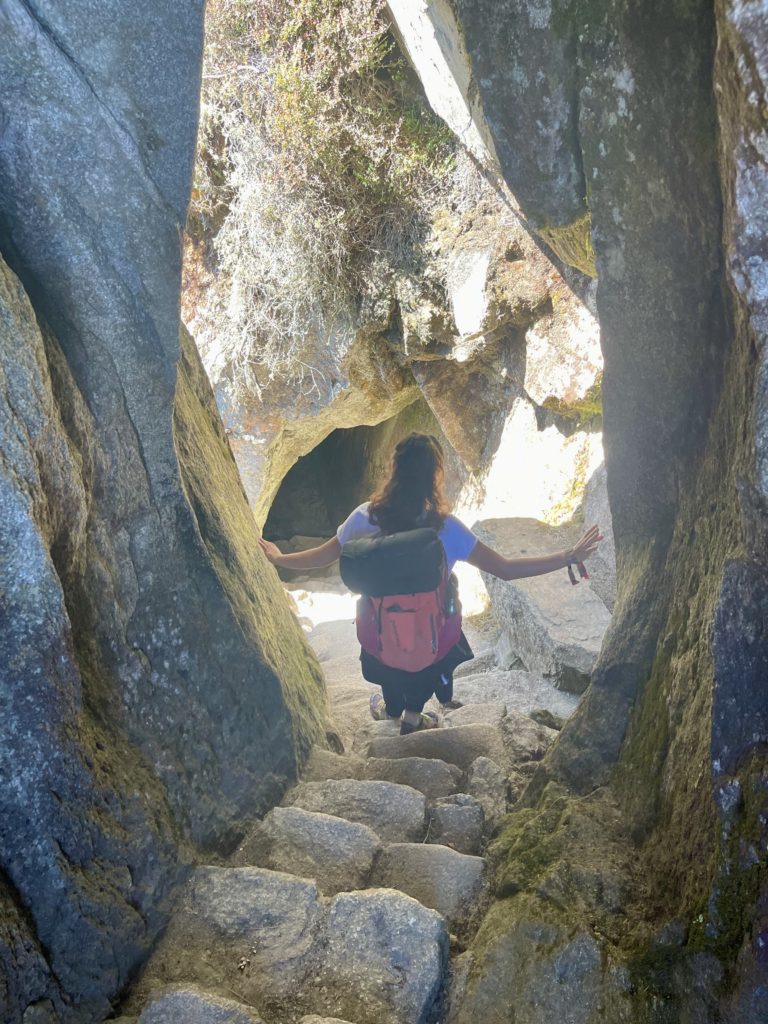
Scams To Look For
- Fake Tourist Assistance: Be wary of individuals offering unsolicited help or tours, which may lead to overpriced services or unsafe areas.
- Spiked Drinks and Food: Never leave your drink unattended and be cautious when accepting food or drinks from strangers.
- Currency Exchange Scams: Use official money exchange services and be aware of counterfeit bills.
Pre-Trip Planning for Peru
Thorough preparation is crucial for a smooth and enjoyable trip to Peru. I planned my trip with months in advance, allowing me to create the ideal itinerary, check out any vaccines and travel documentation I might need, and other essential preparations that made my trip worry-free.
Visa Requirements and Other Travel Documentation
Check if you need a visa based on your nationality. Most countries are exempt from tourist visas for stays of up to 90 days.
A quick internet research will let you know any necessary documentation you need and how to get it. Also, ensure your passport is valid for at least six months beyond your planned departure date from Peru.
Keep digital and physical copies of your passport, travel insurance, and other important documents. If planning to drive, consider getting an International Driving Permit– even if they don’t ask for it, it is always good to have it as a precaution.
What Vaccines Are Needed For Peru?
None of the vaccines are strictly mandatory for entry into Peru. However, depending on your travel itinerary, certain vaccines may be highly recommended or required by specific tour operators, especially for activities in remote areas.
Recommended Vaccines
Non-Mandatory but Advised:
- Routine Vaccines: Measles-mumps-rubella (MMR), Diphtheria-tetanus-pertussis, Varicella (chickenpox), Polio, Influenza (Flu Shot)
- Hepatitis A: Recommended due to the possibility of contracting the virus through contaminated food or water in Peru, regardless of where you are eating or staying.
- Typhoid: Advised for most travelers, especially if visiting smaller cities, rural areas or if you love trying local street foods.
- Yellow Fever: Not mandatory for all travelers, but highly recommended if you visit Peru’s Amazon rainforest region. Some areas may require proof of vaccination for entry. This vaccine is especially important if traveling to areas below 2,300 meters in elevation.
- Hepatitis B: Recommended if you might have sex with a new partner, get a tattoo or piercing, or have any medical procedures.
- Rabies: Generally recommended for travelers involved in outdoor and other activities in remote areas that put them at risk for animal bites (such as adventure travel and caving). Also advised for travelers with significant occupational risks, those visiting remote areas where immediate access to appropriate medical care is limited, or those staying for a long time.
Potential Risks Without Vaccination
- Hepatitis A and Typhoid: Pose a risk of food and waterborne diseases.
- Yellow Fever: A risk in certain parts of the Amazon; the disease can be severe or fatal.
- Hepatitis B, Rabies: Risk through contact with infected individuals or animals.
It’s crucial to consult with a healthcare provider or a travel medicine specialist, ideally 4-6 weeks before your trip, as some vaccines require time to become effective or may involve multiple doses. Your individual health needs and specific travel itinerary will also dictate the most appropriate vaccinations for your trip to Peru.
What About Malaria Tablets in Peru?
When considering the risk of malaria in Peru, it’s important to know that it varies depending on the region you plan to visit. Malaria tablets, or prophylaxis, are not universally recommended for all areas of Peru, but they may be advised for certain regions, especially in the Amazon Basin.
Malaria Risk Areas in Peru
- High Risk: Particularly in the rural Amazonian regions, including areas of the Loreto Region.
- Lower Risk: Some other areas of the Amazon and certain rural areas outside the Andes and the coastal regions.
- No Risk: Lima, the coastal areas south of Lima, and the highland tourist areas (Cusco, Machu Picchu, and Lake Titicaca) are generally malaria-free.
Considerations for Malaria Tablets
If your itinerary includes high-risk areas, malaria tablets may be recommended. Trekking or spending extended periods in rural areas may have a higher risk. Discuss with a healthcare provider whether malaria prophylaxis suits you, considering your health history and any other medications you may be taking. Also, the length of your stay in a malaria-risk area can influence the need for tablets.
Personally, I didn’t take any Malaria Tablets, mostly because I went during the dry season and chose destinations that were not of risk.
Additional Prevention Measures
Using insect repellent with DEET, wearing long-sleeved clothing and trousers, using mosquito nets, and staying in accommodations with screens or air conditioning are great ways to prevent contact with mosquitos. Also, remember that mosquitoes carrying malaria are most active from dusk to dawn, so extra precautions should be taken during these times.
Overall, Peru is not a country with high risk of Malaria, so I wouldn’t worry too much about it!
How Safe is The Water in Peru?
In Peru, tap water is generally not safe to drink for travelers. Drinking bottled or boiled water, especially outside major cities is advisable. Consuming untreated water can lead to illnesses like travelers’ diarrhea, typhoid, and hepatitis A.
Here are some of the water-born diseases you might catch in Peru:
- Travelers’ Diarrhea: Commonly caused by consuming contaminated water. Symptoms include diarrhea, nausea, and stomach cramps. This is preventable by drinking safe water and practicing good hygiene.
- Typhoid: Can be contracted from contaminated water or food. Symptoms include fever, fatigue, and stomach pains. Vaccination and safe drinking practices are key preventatives.
- Hepatitis A: Spread through contaminated food and water. Symptoms include jaundice, fever, and stomach pain. Vaccination and using safe water sources are important for prevention.
COVID-19 Rules: Most (if not all) COVID-19-related restrictions have been lifted in Peru. However, situations can change, so checking current guidelines before traveling is recommended.
Budget Planning
Estimate Your Daily Costs:
- Accommodation: Budget for your preferred style of lodging.
- Food: Set aside funds for dining experiences, from street food to fine dining.
- Activities: Consider the costs of tours, entrance fees to attractions, and any special experiences.
- Transportation: Factor in inter-city travel as well as local transportation.
- Miscellaneous: Always have a buffer for unexpected expenses or souvenirs.
Currency & Banking:
- Peru’s currency is the Sol (PEN). Have some local currency for small purchases, since a lot of street vendors or market stands don’t accept card.
- Inform your bank of travel plans to avoid issues with your credit/debit cards abroad.
FAQs and Useful Tips
Is Peru Good for Solo Travel?
Peru is an excellent destination for solo travelers. Its blend of culture, stunning natural landscapes, and a well-established tourism infrastructure makes it an attractive and accessible option for those traveling alone. Solo travelers in Peru find it relatively easy to navigate the country, meet fellow travelers, and engage with friendly locals. While solo travel anywhere requires mindfulness about personal safety and security, Peru’s popular tourist trails and traveler-friendly amenities ensure a fulfilling and safe experience.
What Do I Need to Know About Traveling to Peru?
When traveling to Peru, being aware of several key factors is important. The high altitude in places like Cusco requires time for acclimatization to prevent altitude sickness. Spanish is the primary language; knowing some basic phrases can significantly enhance your interactions. The Sol (PEN) is the local currency, and cash is significant in more remote areas. Transportation across the country is varied, including domestic flights, buses, and trains. Peru’s rich cultural heritage is a highlight of any visit, so respecting local customs and traditions is paramount.
How Do I Prepare for Solo Travel?
Preparing for solo travel involves thorough research about the destinations you plan to visit and understanding their culture, customs, and logistical aspects. Staying connected is crucial, so consider a local SIM card for easy communication and navigation. Packing should be strategic, accommodating the varied climates and activities you might encounter, while also ensuring not to overpack. Safety is key – keep your valuables secure and always be aware of your surroundings.
Is It Safe to Hike Machu Picchu Alone?
Hiking Machu Picchu alone is generally safe, particularly on famous trails like the Inca Trail, where a guide and a group accompany you. It’s important to follow the established paths, remain aware of your physical limits, and inform someone of your hiking plans. Solo hikers often find joining a group trek a beneficial mix of independence and safety.
Is Peru Too Touristy?
While some areas in Peru, particularly around major attractions like Machu Picchu, can feel crowded, the country’s vastness offers plenty of opportunities to explore less-traveled paths. Seeking out lesser-known destinations can provide a more authentic and crowd-free experience.
What Should I Be Careful of in Peru?
Visitors to Peru should be cautious of altitude sickness in high-elevation areas, take precautions against pickpocketing, especially in crowded places, and stay alert to common travel scams. It’s also important to use bottled or purified water, as tap water is generally unsafe to drink.
What Not to Do When Visiting Peru?
When visiting Peru, it’s crucial not to disrespect sacred sites and local customs. Avoid illegal activities, including drug use, as Peru has strict laws. Engaging with the local culture respectfully, including asking permission before taking photos of people, is essential for a harmonious visit.
What is the Number 1 Attraction in Peru?
The top attraction in Peru is Machu Picchu, an iconic ancient Incan city in the Andes Mountains. Known for its archaeological importance, impressive stone structures, and spectacular natural setting, Machu Picchu is a UNESCO World Heritage site and one of the New Seven Wonders of the World, drawing visitors from all around the globe.
Camila is a true adventurer, with a love for hiking, exploration, and also the finer, more luxurious things in life. A tacos al pastor enthusiast, and lover of well-thought-out lodgings, hotels, and the Mediterranean Ocean, she has a passion for exploring the uncovered nooks and crannies of this beautiful blue earth – armed with her orange carry-on backpack. You’ll find Camila writing in detail about all things South America here on WHTC. Anything you need to know from hiking the Inca trail to digital nomad-ing around Latin America to uncovering the great, unknown spots in Brazil (and more) – Camila is here to help carve the path and make traveling easier for all.
